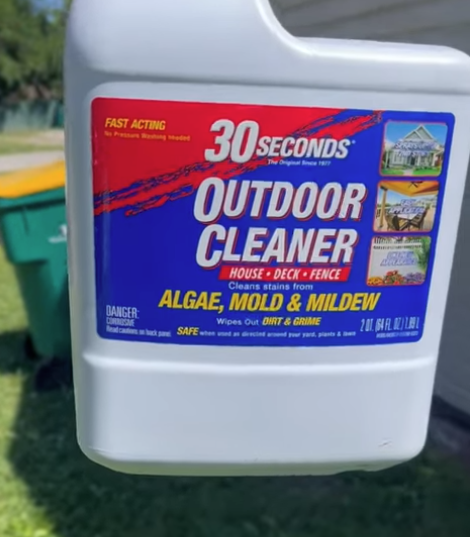What Should I Do to Clean My Siding? A Safe, Effective Guide
Keeping your home’s siding clean is essential not just for curb appeal, but also for the longevity of your exterior. Over time, dirt, mold, mildew, algae, and environmental pollutants can accumulate on siding, making your home look worn and potentially causing damage. While many homeowners think pressure washing or bleach solutions are the best options, these approaches can often do more harm than good. Here’s a safe, effective guide to cleaning your siding the right way.
Why You Should Avoid Pressure Washing
Pressure washing may seem like a quick fix for dirty siding, but it carries significant risks. High-pressure water can:
-
Force water behind siding panels, potentially causing rot, mold, or structural damage.
-
Damage paint or protective coatings, especially on older homes.
-
Push debris into seams and crevices, making problems worse over time.
For most siding types—vinyl, fiber cement, or painted wood—a gentle, low-pressure approach is safer and more effective.
Why Bleach Is Not Recommended
Many homeowners turn to bleach for tough stains, mold, or mildew. However, bleach has several downsides:
-
It’s harsh on surfaces, potentially causing discoloration or deterioration.
-
It’s toxic to plants and pets if it runs off into your garden.
-
It can irritate skin and respiratory systems, making the cleaning process hazardous.
Fortunately, there are safer alternatives that are just as effective.
Safe Alternatives for Cleaning Siding
Instead of pressure washing or bleach, consider using products designed to gently clean siding while being environmentally friendly. Two popular categories include:
1. Wet & Forget
Wet & Forget is a popular choice among homeowners because:
-
It’s non-acidic and bleach-free, making it safe for vinyl, aluminum, and fiber cement siding.
-
It works with the weather, gradually removing mildew, moss, algae, and dirt over time.
-
It’s easy to apply, usually via a garden sprayer.
How to use Wet & Forget:
-
Spray the siding evenly, starting at the bottom and working your way up.
-
Avoid scrubbing or rinsing immediately; let the solution sit and work with rainwater over the next few weeks.
-
Reapply every 6–12 months as needed for ongoing maintenance.
2. Peroxide-Based Cleaners
Hydrogen peroxide-based cleaning solutions are another excellent option. They:
-
Break down mold, mildew, and algae effectively without harsh chemicals.
-
Are environmentally friendly, safe for plants, pets, and humans.
-
Can be used with a soft brush or garden sprayer for more stubborn stains.
Tips for using peroxide-based cleaners:
-
Mix the solution according to the product instructions (typically 3–5% hydrogen peroxide for household siding cleaners).
-
Apply evenly to affected areas and let it sit for 10–15 minutes.
-
Gently scrub with a soft brush if needed, then rinse lightly with water.
-
Avoid using wire brushes or abrasive scrubbers, which can scratch siding.
Tools You’ll Need
To clean your siding safely, gather a few basic tools:
-
Soft bristle brush or sponge
-
Garden sprayer or hose with a gentle spray nozzle
-
Protective gloves and eyewear
-
Ladder (if needed for upper levels)
Step-by-Step Siding Cleaning Guide
-
Inspect your siding – Look for damaged areas, loose panels, or signs of mold and mildew. Address these issues before cleaning.
-
Protect surrounding areas – Cover plants, furniture, and pathways to avoid overspray.
-
Apply your cleaner – Use Wet & Forget or a peroxide-based solution.
-
Allow time to work – Let the solution sit according to instructions; some products may require weeks for full effect.
-
Rinse lightly if necessary – A gentle rinse can remove residue, but avoid high-pressure water.
-
Regular maintenance – Clean siding once or twice a year to prevent buildup.
Additional Tips
-
Check your gutters: Overflowing gutters can stain siding and encourage mold growth. Clean gutters regularly.
-
Trim back vegetation: Trees and bushes touching your siding can trap moisture and cause mildew.
-
Avoid harsh chemicals: Strong acids or commercial cleaners may remove stains but can damage siding.
-
Start from the bottom up: This prevents streaking and ensures even coverage.
Conclusion
Cleaning your siding doesn’t have to be a stressful or risky task. Avoid pressure washing and bleach, and instead opt for gentle, safe alternatives like Wet & Forget or peroxide-based cleaners. With a little patience and the right products, you can keep your home’s exterior looking fresh and well-maintained for years to come. Regular maintenance, combined with careful cleaning, will protect your siding and enhance your home’s curb appeal.

